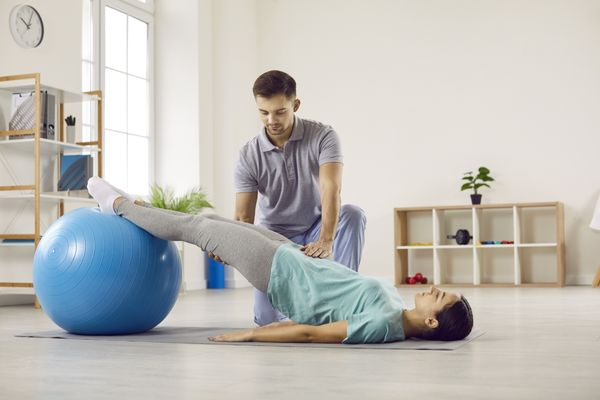
People with balance issues may feel physically weak, unsteady or as if the room is spinning while standing, sitting or lying down.
Balance problems are caused by a disconnect between the ear’s vestibular system, eyes and the musculoskeletal system. Ordinarily, your body sends signals to your brain and moves appropriately in response. When at least one of these areas is malfunctioning or is affected by a medical problem, a balance issue can result.
Physical therapy can help you manage symptoms and adapt to your environment. Here’s what you should know if you have a balance disorder.
Signs of a Balance Problem
Balance problems often start with the ears. If you regularly experience a combination of the following symptoms, you could have one of these balance-related conditions:
- Vertigo or spinning as you stand, sit or move
- Feeling lightheaded or dizzy
- Feeling physically unsteady
- Vision changes
- Mental confusion
In turn, you may find it difficult to stand, sit upright or even remain still. Considering the relationship between your ears, eyes and musculoskeletal system, balance problems can arise from:
- Muscle changes
- Joint stiffness or restricted range of motion
- Inner ear issues, including an infection
- Head injury
- Blood circulation disorder
- High or low blood pressure
- Sedentary lifestyle
- Aging
- Stroke
- Multiple sclerosis
- Parkinson’s disease
- Chemical changes in the brain
- Medication side effects
- Spinal cord injury
- Arthritis
- Diabetes
Effects of a Balance Issue
Balance issues vary, including when you experience symptoms. The signs emerge once a person moves or attempts to perform tasks. Balance may also change in relation to the condition of a space, for instance an adjustment in lighting.
These factors increase risk for a fall and impact how well someone performs everyday activities. You might avoid certain motions, movements or attempt to sit still for most of the day. However, limited activity can also result in a sense of isolation and increase risk of depression.
Treatment for Balance Problems
After you have been assessed for one of these issues, you may be referred to physical therapy. These sessions have three general objectives: to help you adapt to living with a balance issue, remain physically active and develop strategies for doing so.
Physical therapy starts with an assessment to identify when you experience balance problems, the degree of severity, how they impact your life, and where and when the symptoms emerge. Your movement, strength, coordination, balance and ability to visually track an object will also be assessed. From this point, your physical therapist:
- Will offer recommendations for balance aids and strategies to reduce fall risks, like wearing certain types of footwear and making modifications to your home.
- Help improve your mobility and simultaneously address your fear of falls to improve physical strength and coordination.
- Provide exercises to improve static and dynamic balance.
- Target the core, as well as the trunk area and hips, to help you strengthen the muscles responsible for improving posture and balance.
- Address any related conditions impacting mobility and balance, including joint issues, restricted mobility and flexibility and poor posture.
- Help you become more physically active, recommending exercises based on your condition and recovery.
The team at Integrated Rehab can help with your balance issues! To learn more about our approach to vestibular and balance rehabilitation, contact us to schedule an appointment.

